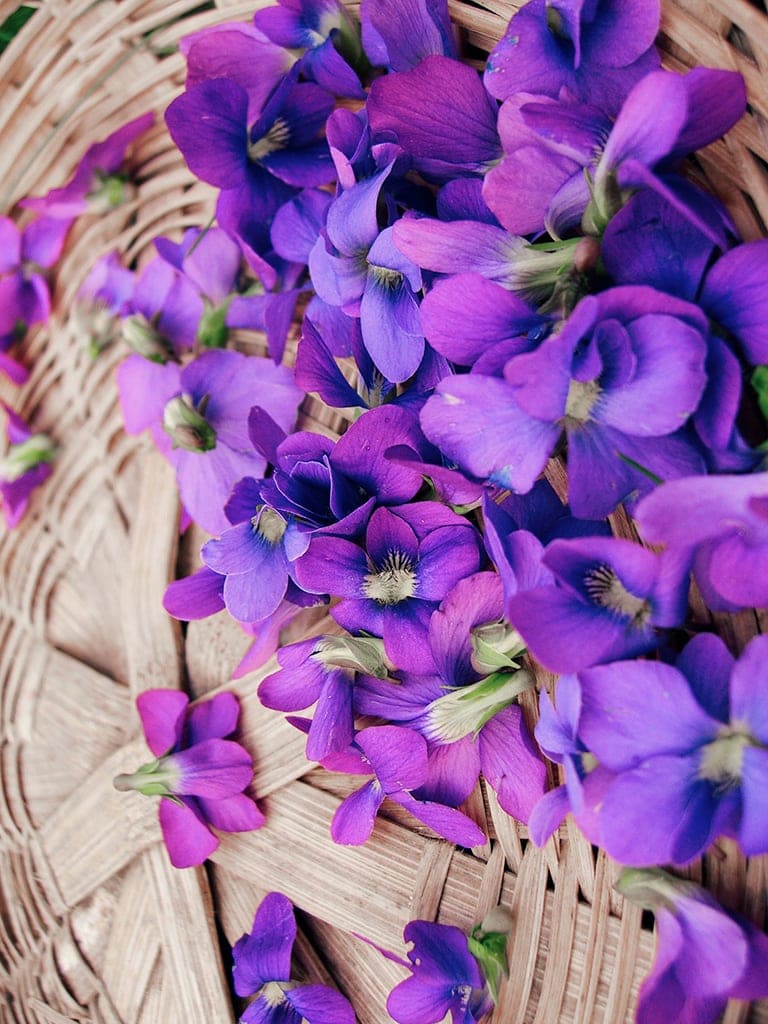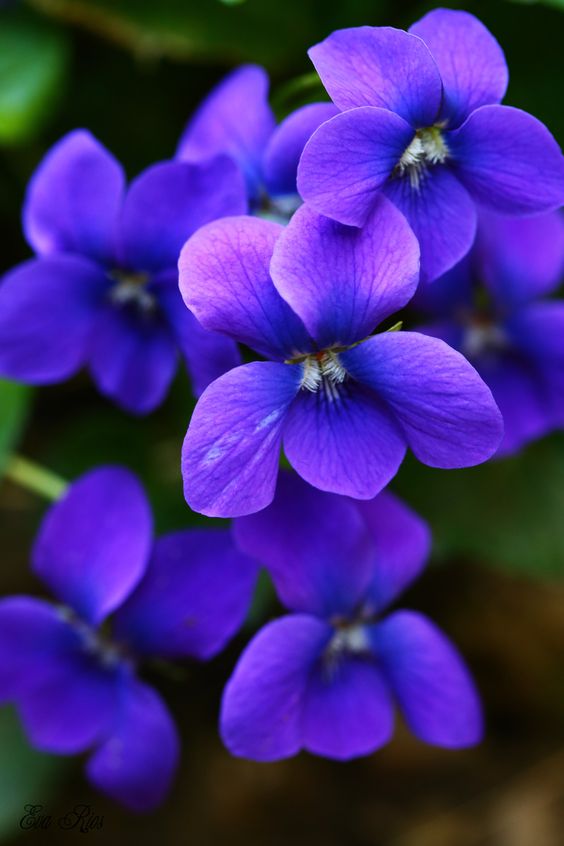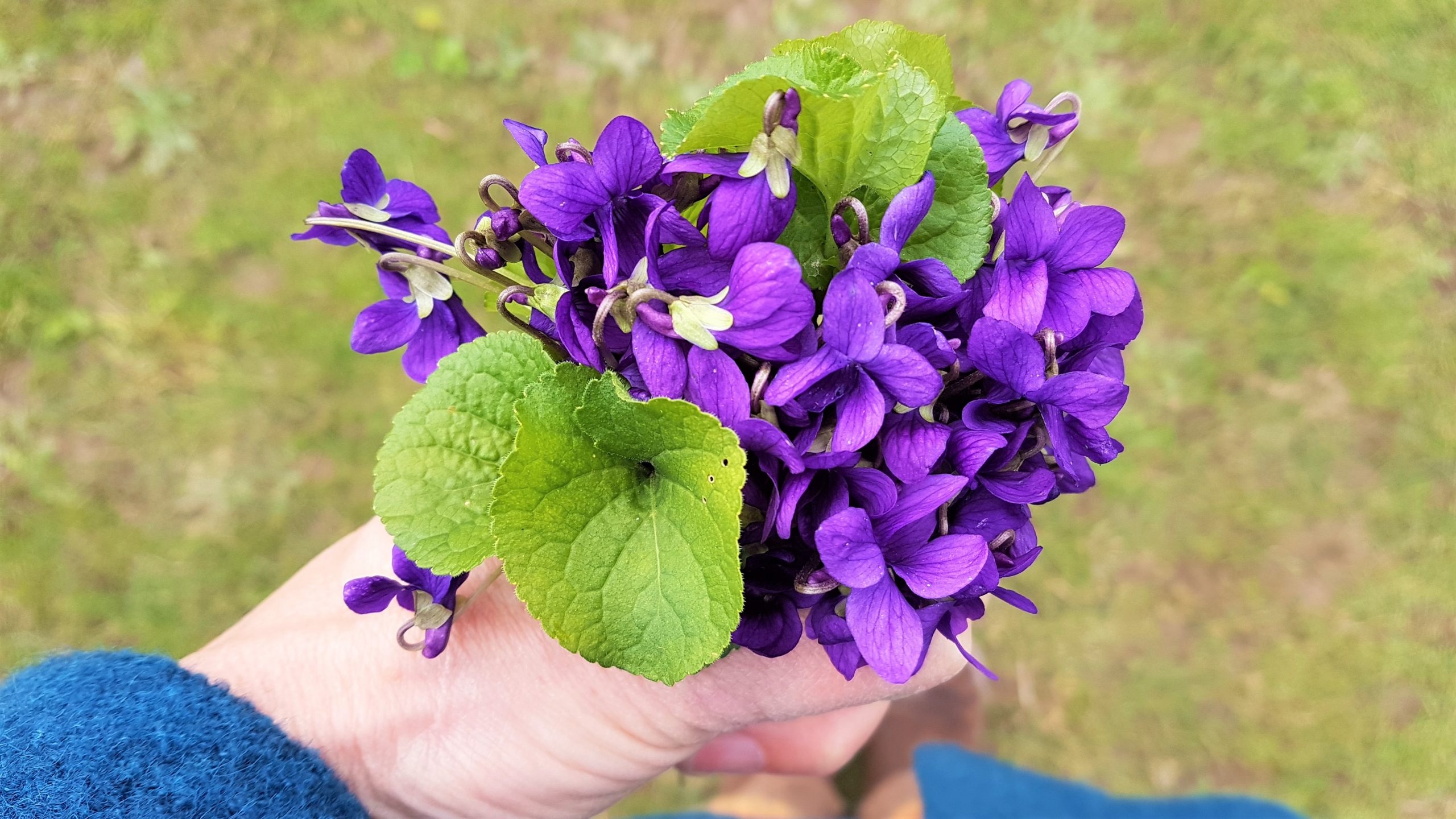Violet flowers have long been admired for their delicate beauty and enchanting fragrance. But beyond their physical attributes, these flowers hold a deeper meaning that has captivated people for centuries. In this article with Impeccable Nest, we will delve into the symbolism and significance of violet flowers, exploring their cultural and historical associations, as well as their spiritual and emotional connotations.

The Origins and History of the Violet Flower
- Violets are native to Europe, Asia and some parts of North America. They have been cultivated for medicinal uses since at least 500 BC.
- The name “violet” comes from the Latin word “viola” which means violet flower.
- In Greek mythology, violets were said to symbolize the death of Attis, a lover of the goddess Cybele. According to the legend, violets sprang up where the blood of Attis dropped to the ground.
- During the Middle Ages, Christians associated violets with the Virgin Mary and used them as a symbol of humility.
- European folklore also links violets to death and mourning. This is likely due to the fact that violet flowers wilt and die quickly after being picked.
- Napoleon Bonaparte adopted the violet as his personal flower, using its image extensively on Empire style fabrics, furniture and other decorative arts.
Violet Flower Meaning:
Faithfulness
In the language of flowers, violets have long been associated with faithfulness, loyalty, and devotion. This symbolism dates back to ancient Greece, where violets were believed to be a symbol of love and fertility. The Greek goddess Aphrodite was said to have created violets as a symbol of her love for Adonis.
Throughout history, violets have held a special place in many cultures and traditions. In Victorian times, giving flowers as gifts became a popular way to express one’s feelings and emotions. Each flower had its own specific meaning and could convey a message without the need for words. Violets, in particular, were a popular choice for Valentine’s Day gifts between lovers.
During this time, it was considered improper for couples to openly express their love and affection for one another. As a result, they turned to the language of flowers to communicate their feelings. Violets, with their delicate purple petals and sweet fragrance, were seen as a perfect representation of love and devotion.
One of the main reasons why violets were chosen as a symbol of faithfulness and loyalty is because of their ability to bloom in the harshest of conditions. They are known to thrive in shady areas and can even grow through cracks in rocks and walls. This resilience and determination were seen as qualities that were essential for a successful and lasting relationship.
Moreover, violets were also associated with keeping a promise. In Victorian times, promises were taken very seriously, and breaking them was considered a grave offense. By giving violets as a gift, one was essentially promising to remain faithful and loyal to their partner. It was a way of showing commitment and dedication to the relationship.
The popularity of violets as a Valentine’s Day gift continued well into the 20th century. However, with the rise of more modern forms of communication, the tradition of giving flowers as a means of expressing love and devotion has somewhat diminished. Nevertheless, violets still hold a special place in the language of flowers and continue to be a symbol of faithfulness, loyalty, and devotion.
Violets have a rich history and symbolism when it comes to matters of the heart. They represent qualities that are essential for a strong and lasting relationship, such as faithfulness, loyalty, and devotion. So the next time you see a bouquet of violets, remember their significance and the message they convey.
Delicate Beauty
Violets have been admired for their delicate appearance and light fragrance for centuries, making them a popular flower in art and literature. In particular, violets have long been seen as a symbol of modesty and feminine beauty, which is why they are often featured in portraits of women.
The delicate nature of violets is reflected in their appearance. With small, heart-shaped petals and a soft, velvety texture, these flowers exude a sense of fragility and vulnerability. This fragility is further emphasized by their pastel colors, ranging from pale lavender to deep violet, giving them a delicate and ethereal quality. These characteristics make violets the perfect representation of femininity and grace.
In addition to their physical appearance, violets also have a subtle yet alluring fragrance. The sweet, floral scent of violets has been associated with love and romance, making them a popular choice for bouquets and perfumes. This delicate fragrance adds to the overall charm and appeal of violets, making them a beloved flower among artists and poets alike.
Throughout history, violets have been prominently featured in art, particularly in portraits of women. During the Renaissance and Baroque periods, violets were a common motif in paintings of noblewomen. These women were often depicted wearing garlands or holding bouquets of violets, symbolizing their modesty and purity. The use of violets in these portraits not only added a touch of elegance and beauty but also conveyed the virtues and ideals associated with femininity.
Furthermore, violets were also used in religious art to represent the Virgin Mary. As the embodiment of purity and humility, the Virgin Mary was often depicted surrounded by violets, emphasizing her virtuous nature. This association with the Virgin Mary further solidified the symbolism of violets as a representation of feminine beauty and modesty.
In literature, violets have also been used as a symbol of femininity and beauty. In Shakespeare’s play, Hamlet, Ophelia famously sings, “There’s rosemary, that’s for remembrance; pray, love, remember: and there is pansies, that’s for thoughts.” The “pansies” mentioned in this line are believed to refer to violets, which were often associated with thoughts of love and romance.
Violets have long been admired for their delicate appearance and light fragrance, making them a popular symbol of modesty and feminine beauty. Their presence in art and literature throughout history has solidified their status as a beloved flower, representing the virtues and ideals associated with femininity.
Spirituality
In Christianity, violets hold a significant symbolic meaning and are often associated with the Virgin Mary. The color violet is traditionally seen as a symbol of modesty and humility, traits that are highly valued in Christian teachings. This symbolism can be traced back to the early Christian era when the Virgin Mary was often depicted wearing a robe of violet or purple, which was considered a royal color at the time.
The connection between violets and the Virgin Mary can also be seen in religious art and literature. In many paintings and sculptures, Mary is shown surrounded by violets or sitting in a bed of violets. This imagery is meant to convey her purity and grace, as well as her close relationship with nature.
Furthermore, violets are also closely associated with two important seasons in the Christian calendar – Advent and Lent. These are periods of spiritual preparation and reflection leading up to Christmas and Easter, respectively. During these times, Christians are encouraged to focus on prayer, repentance, and self-reflection. The color violet is seen as a reminder of the need for humility and penance during these seasons.
In some Christian traditions, violets are also used as a symbol of Christ’s suffering and sacrifice. The deep purple color of violets is reminiscent of the color of bruises, which were inflicted upon Jesus during his crucifixion. This symbolism serves as a reminder of the immense pain and suffering that Jesus endured for the sake of humanity.
Moreover, violets are also believed to have healing properties in Christianity. According to legend, when Mary wept at the foot of the cross, her tears turned into violets. As a result, violets are seen as a symbol of hope and comfort, especially during times of sorrow and grief.
Violets hold a special place in Christianity and are deeply intertwined with the figure of the Virgin Mary. They represent virtues such as modesty, humility, and purity, and are also associated with important seasons of spiritual preparation. The symbolism of violets serves as a reminder of the teachings and sacrifices of Jesus Christ, making them a significant part of Christian tradition and culture.

Death and Mourning
Violets are a type of small, delicate flowers that come in various shades of purple and blue. They have been used in myths and folklore for centuries, and one of the most common associations with violets is death. This connection can be traced back to their fragile nature and how quickly they wilt after being picked.
In many cultures, violets are seen as symbols of fragility and impermanence. This is due to their short lifespan and how easily they wither away. In ancient Greek mythology, it was believed that violets were created by the god Zeus as a symbol of mourning for his lover, Adonis, who died tragically. The goddess Persephone, who was also associated with death and the underworld, was said to have turned Adonis’ blood into violets as a way to honor him.
In addition to their association with death in myths, violets have also been used in funerals and other ceremonies honoring the dead. This tradition can be traced back to the Victorian era when violets were commonly used in funeral wreaths and placed on graves. The deep purple color of violets was seen as a symbol of mourning and grief, making them a fitting choice for such occasions.
Furthermore, violets have also been used in religious ceremonies and rituals related to death. In Christianity, violets are often associated with the Virgin Mary and are used in the celebration of her feast day, which falls during the Lenten season. During this time, violets are used to decorate altars and churches, and they are also given as gifts to honor the Virgin Mary.
The use of violets in funerals and other death-related ceremonies is not limited to Western cultures. In Japan, violets are known as “shikimi” and are often used in Buddhist funeral rites. They are also used in traditional Japanese medicine as a remedy for grief and sadness.
In addition to their associations with death, violets have also been used in folklore as a symbol of love and devotion. In the Middle Ages, it was believed that if a woman carried a violet with her, her lover would remain faithful to her. This belief may have stemmed from the fact that violets were often given as gifts between lovers, as they were seen as a symbol of loyalty and fidelity.
Violets have a long history of being associated with death in both myths and folklore. Their delicate nature and short lifespan make them a fitting symbol for the fragility of life and the inevitability of death. However, they are also seen as symbols of love and devotion, adding a layer of complexity to their symbolism. Whether used in funerals or given as tokens of affection, violets continue to hold a special place in our cultural traditions and beliefs surrounding death.
Spiritual and Emotional Connotations of Violet Flowers
Spiritual Significance: The Violet as a Symbol of Wisdom and Intuition
The violet flower has long been revered for its beauty and delicate fragrance, but it also holds a special place in the world of spiritual practices. This small yet powerful flower is believed to possess healing properties and is often used in herbal remedies to promote physical and emotional well-being. Additionally, the violet flower is associated with wisdom and intuition, making it a popular choice for meditation and other spiritual rituals.
One of the main reasons why the violet flower is considered to have healing properties is due to its high concentration of antioxidants. These powerful compounds help to protect the body from free radicals, which can cause cellular damage and lead to various health issues. By incorporating violet flowers into herbal remedies, individuals can harness these antioxidant properties to support their overall health and well-being.
In addition to its physical healing properties, the violet flower is also believed to have a positive impact on mental and emotional health. Its calming scent is said to promote relaxation and inner peace, making it an ideal aid for spiritual practices such as meditation. The gentle aroma of violets can help to soothe the mind and release tension, allowing individuals to enter a deeper state of meditation and connect with their inner selves.
Furthermore, the violet flower is often associated with wisdom and intuition. In many spiritual traditions, the color purple is linked to the third eye chakra, which is believed to be the center of intuition and spiritual insight. As the violet flower shares this same color, it is often seen as a symbol of spiritual growth and enlightenment. Incorporating violets into spiritual practices can help individuals tap into their intuition and gain a deeper understanding of themselves and the world around them.
The use of violet flowers in spiritual practices is not limited to just meditation. They are also commonly used in rituals and ceremonies to enhance spiritual connections and promote healing. For example, some cultures believe that placing violet flowers on a person’s forehead can help to open their third eye and facilitate a deeper spiritual experience.
In addition to its healing and spiritual properties, the violet flower is also associated with love and protection. In ancient Greek mythology, violets were believed to be a symbol of love and fertility, and they were often used in love potions and spells. Today, many people still use violet flowers to attract love and strengthen existing relationships. They are also seen as a protective flower, warding off negative energies and promoting positivity and harmony.
The violet flower holds a special place in the world of spiritual practices. Its healing properties, association with wisdom and intuition, and calming scent make it a valuable aid for meditation and other spiritual rituals. Whether used in herbal remedies, ceremonies, or simply as a decoration, the violet flower is a powerful tool for promoting physical, emotional, and spiritual well-being.
Emotional Connotations: The Violet as a Symbol of Love and Devotion
Violet flowers have long been associated with love and devotion, making them a popular choice for romantic gestures. These delicate and enchanting blooms are not only visually stunning, but their sweet fragrance also evokes feelings of tenderness and affection. It is no wonder that they have become a go-to gift for expressing love and admiration.
The association between violets and love can be traced back to ancient Greek mythology. According to legend, the god Zeus fell in love with a mortal woman named Io. To protect her from his jealous wife Hera, he transformed her into a white heifer. As a symbol of his love, Zeus adorned her with violets, which became her favorite flower.
In addition to their mythological significance, violets have also been used throughout history as a symbol of love and devotion. During the Victorian era, when expressing emotions through flowers was a common practice, violets were often given as a token of love. They were also commonly used in bridal bouquets, representing the bride’s faithfulness and loyalty to her groom.
The delicate beauty of violets adds to their romantic appeal. Their soft, velvety petals and vibrant colors make them a sight to behold. The most common color of violets is purple, which has long been associated with royalty and nobility. This further adds to the symbolism of love and admiration that violets represent.
But it’s not just their appearance that makes violets a popular choice for expressing love. Their enchanting fragrance is also a major factor. The sweet, floral scent of violets is known to have a calming effect on the mind and can evoke feelings of happiness and joy. In fact, the scent of violets has been used in aromatherapy to promote relaxation and reduce stress.
Aside from their association with love, violets also carry meanings of modesty and humility. This is due to their small size and unassuming nature. In the language of flowers, violets symbolize modesty and humility, making them a perfect choice for expressing sincere and genuine emotions. This can be especially meaningful in romantic relationships, where honesty and sincerity are highly valued.
Violet flowers are often associated with love and devotion due to their rich history and symbolism. Their delicate beauty, enchanting fragrance, and meanings of modesty and humility make them a popular choice for romantic gestures. Whether given as a gift or used in a bouquet, violets are a beautiful and meaningful way to express love and admiration for someone special.

Conclusion
From ancient Greek mythology to modern-day art and literature, violet flowers have captivated people with their delicate beauty and enchanting fragrance. But beyond their physical attributes, these flowers hold a deeper meaning that has stood the test of time. Whether you are drawn to their spiritual connotations or emotional associations, incorporating the symbolism of violet flowers into your life can bring a sense of calmness and tranquility. So the next time you come across a field of violets, take a moment to appreciate their enduring significance and the rich history behind them.

We’re Emma Carole Paradis and Kimberly Carole, the owners and designers of Impeccable Nest, based in Bedford, New Hampshire. A mother-daughter team with a love of design. Originally from Manhattan Beach, California, now based in Bedford, New Hampshire, we bring a Southern California cool and New England tradition to our design. Not only do we work together…we also live together in a multi-generational home…and a home that they are known to design for others.
